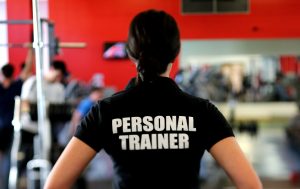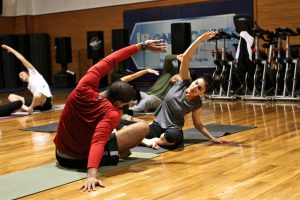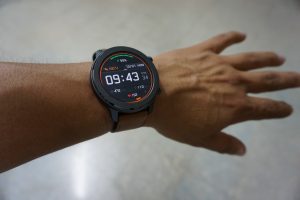Strength and Conditioning for Triathletes: Building a Sustainable Training Plan
Strength and conditioning (S&C) is a cornerstone of a sustainable triathlon training plan yet is frequently ignored. While triathletes often focus on swimming, biking, and running, adding S&C workouts can dramatically improve performance, reduce injury risk, and enhance overall resilience. A well-rounded S&C plan builds strength, stability, and endurance in a way that supports and sustains the repetitive movements of triathlon training, ultimately helping you achieve peak performance.
Why Strength and Conditioning Matters in Triathlon
Triathlons put a high demand on the body, requiring strength, endurance, and flexibility. Without a solid S&C foundation, you risk muscle imbalances, overuse injuries, and suboptimal performance. Including S&C in your training not only boosts power in each discipline but also improves your efficiency and helps prevent burnout.
Benefits of S&C for Triathletes:
- Enhanced Power and Efficiency: Stronger muscles mean better force production and improved endurance across swim, bike, and run segments.
- Improved Injury Prevention: Targeted S&C reduces the risk of common triathlon injuries by strengthening joints, muscles, and connective tissues.
- Balanced Muscle Development: Addressing muscle imbalances prevents overuse and improves overall performance.
- Faster Recovery: A strong body recovers quicker, helping you handle higher training loads and allowing you to train consistently.
Let’s explore the most effective strength exercises and stretches for triathletes to support sustainable training.
Strength Training Exercises for Triathletes
Triathletes benefit most from functional, compound exercises that engage multiple muscle groups and emphasize endurance, power, and stability. Focus on these key areas: core, legs, and upper body.
1. Lower Body: Building Leg Power and Endurance
Strong legs are essential for cycling and running efficiency. Incorporate these exercises 2-3 times per week, with moderate weights and higher reps (8-15) to build endurance.
- Squats: A fundamental exercise that strengthens the quads, hamstrings, and glutes. Keep your core engaged and avoid letting your knees collapse inward.
- How to do it: Stand with feet shoulder-width apart. Lower down as if sitting back into a chair, then return to standing.
- Lunges: Lunges improve balance and target the legs individually, correcting imbalances between each side.
- How to do it: Step one foot forward, lowering your back knee toward the ground, and return to standing. Repeat on the opposite leg.
- Single-Leg Deadlifts: These build hamstring and glute strength, improving balance and stability, which is crucial for cycling.
- How to do it: Holding a weight in one hand, hinge forward on one leg while keeping the other extended behind. Return to standing and repeat on the opposite side.
- Box Jumps: Plyometric movements like box jumps improve power and leg explosiveness, benefiting bike and run performance.
- How to do it: Stand in front of a box, bend your knees, swing your arms, and jump onto the box. Step down and repeat.
2. Core: Strengthening Your Foundation
A strong core improves efficiency in all three triathlon disciplines. Core training supports posture, balance, and power transfer from your upper to lower body. Aim to include core exercises 2-3 times a week.
- Plank Variations: Planks engage your entire core and are easy to modify for different skill levels.
- How to do it: Start in a push-up position, then lower down to your forearms, keeping your body in a straight line. Hold for 30-60 seconds.
- Russian Twists: This exercise targets the obliques, helping with rotational stability for swimming.
- How to do it: Sit with knees bent, lean back slightly, and twist side to side while holding a weight.
- Dead Bug: A core-stabilizing exercise that strengthens the deep core muscles, improving balance and stability.
- How to do it: Lie on your back, arms extended toward the ceiling, knees bent at 90 degrees. Extend one arm and the opposite leg simultaneously, then return and repeat on the other side.
- Bicycle Crunches: This dynamic exercise engages the entire core, including the lower abs and obliques.
- How to do it: Lie on your back, bring knees to a tabletop position, and twist the opposite shoulder to knee, alternating sides.
3. Upper Body: Building Swim Power and Stability
While triathlons are leg-heavy, upper body strength is crucial for a powerful swim stroke and balanced muscle development. Add these upper body exercises 1-2 times a week.
- Push-Ups: A classic exercise that builds shoulder and chest strength, key for swimming power.
- How to do it: Start in a plank, lower your body until elbows are at a 90-degree angle, then push back up.
- Pull-Ups or Lat Pulldowns: These target the lats and upper back, enhancing swimming performance and posture.
- How to do it: Perform a pull-up by gripping an overhead bar and pulling yourself up. Alternatively, use a lat pulldown machine to work the same muscles.
- Rows (Dumbbell or Cable): Rows strengthen the upper back and shoulder stabilizers, reducing swim-related shoulder fatigue.
- How to do it: Pull the weight toward your body, keeping your back flat and elbows close to your sides.
Conditioning Workouts for Endurance and Agility
For improved performance, incorporate plyometric and conditioning exercises. These add dynamic strength, agility, and cardiovascular endurance to your training.
- High-Knee Running Drills: High-knee drills improve running form and leg drive.
- How to do it: Run in place, lifting knees to hip height and swinging arms. Aim for 30-45 seconds.
- Box Step-Ups with Dumbbells: Adds a strength and balance element, mimicking the uphill demands of cycling.
- How to do it: Step onto a box while holding weights, alternating legs. Repeat for 10-15 reps on each side.
- Kettlebell Swings: Swings strengthen the glutes, core, and hamstrings while improving cardiovascular endurance.
- How to do it: Swing the kettlebell from between your legs to shoulder height, focusing on a hip hinge rather than a squat.
Stretches and Mobility for Triathletes
Flexibility and mobility are essential for triathletes, as repetitive movements can lead to tightness and decreased range of motion. Aim to stretch daily, especially after workouts.
Key Stretches for Triathletes
- Hip Flexor Stretch: Opens up the hip flexors, which can become tight from cycling and running.
- How to do it: Kneel on one knee, pushing hips forward until you feel a stretch in the front of the hip.
- Hamstring Stretch: Improves flexibility in the back of the legs, essential for cycling and running efficiency.
- How to do it: Stand with one foot extended forward, hinge at the hips, and reach toward your toes.
- Shoulder Stretch: Loosens shoulder muscles and prevents tightness from swimming.
- How to do it: Cross one arm over your chest and hold with the opposite arm, stretching the shoulder and upper back.
- Spinal Twist: Increases flexibility in the torso, improving rotation for swimming.
- How to do it: Sit with one leg extended, cross the opposite foot over the knee, and twist your torso toward the bent knee.
- Quad Stretch: Relieves tightness in the quads, a common issue after cycling.
- How to do it: Stand on one leg, grab your other ankle, and pull it toward your glutes, feeling the stretch in the front of your thigh.
Building a Sustainable S&C Training Plan
Strength and conditioning should be integrated into your training without overwhelming your body. For most triathletes, two to three S&C sessions per week are sufficient. Schedule these on lower-intensity days or after swim sessions to avoid fatigue.
Example S&C Weekly Plan:
- Monday: Lower Body (Squats, Lunges, Box Jumps), Core (Planks, Bicycle Crunches)
- Wednesday: Upper Body (Push-Ups, Rows, Lat Pulldowns), Conditioning (Kettlebell Swings)
- Friday: Core (Russian Twists, Dead Bug), Full Body (High-Knee Drills, Box Step-Ups)
Sustainable Training for Triathlon Success
Strength and conditioning provide a solid foundation for any triathlete. By focusing on functional strength, mobility, and endurance, you’ll not only improve race performance but also ensure your training is sustainable and injury-free. At TriReady, we’re here to support your journey to a balanced, powerful, and sustainable approach to triathlon training. Embrace S&C, enjoy the benefits, and watch your triathlon performance soar!



